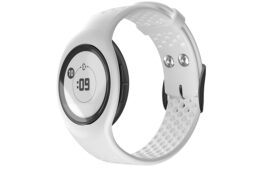Increasing requirements, including rising surface pressures and high operating temperatures, have made flat gaskets indispensable in the chemical and pharmaceutical industries. However, fluctuating loads and changes in internal pressure pose major challenges to their performance. Freudenberg-NOK Sealing Technologies (Freudenberg-NOK) offers flat gaskets made of three different materials whose scope covers the given requirements in all areas of application.

The white FG-360, based on DIN 28091-3, is completely constructed of expanded polytetrafluoroethylene (ePTFE). It is available as a stamped flat gasket or a self-adhesive sealing band
The white FG-360, based on DIN 28091-3, is completely constructed of expanded polytetrafluoroethylene (
Among all types of flat gaskets, it offers the best resistance values in nearly all media. Both the sealing band and the sheet format are impressive for their suitability for wide-ranging temperatures, from -270 to 310° C. Another of ePTFE’s advantages is that its cold flow characteristics are better than those of PTFE, leading to improved performance in fluctuating temperatures.
Freudenberg-NOK delivers the self-adhesive joint sealant in rolls to facilitate storage and assembly. It can be individually tailored onsite and seals complex forms, joints, covers or frames quickly and reliably. The roll’s outer packaging protects the band from contamination.
The blue FG-120 is a graphite seal based on DIN 28091-2 and reinforced with aramide fibers. It meets the specifications of EU Regulation 1935/2004 and TA Luft, standing out for its high mechanical load capacity as well as good chemical and thermal resistance. The FG-120 is suited to operating temperatures ranging from -100 to 300° C.
The white FG-180 is a flat gasket based on DIN 28091-3. It is made of PTFE and filled with structured silicate. This seal is primarily used in the pharmaceutical industry. It meets the specifications of TA Luft and FDA 21 CFR 177.1550. The silicate offers better resistance values than flat gaskets filled with barium sulfate. It is used in temperatures ranging from -200 to 210° C.
Freudenberg-NOK
www.fst.com




